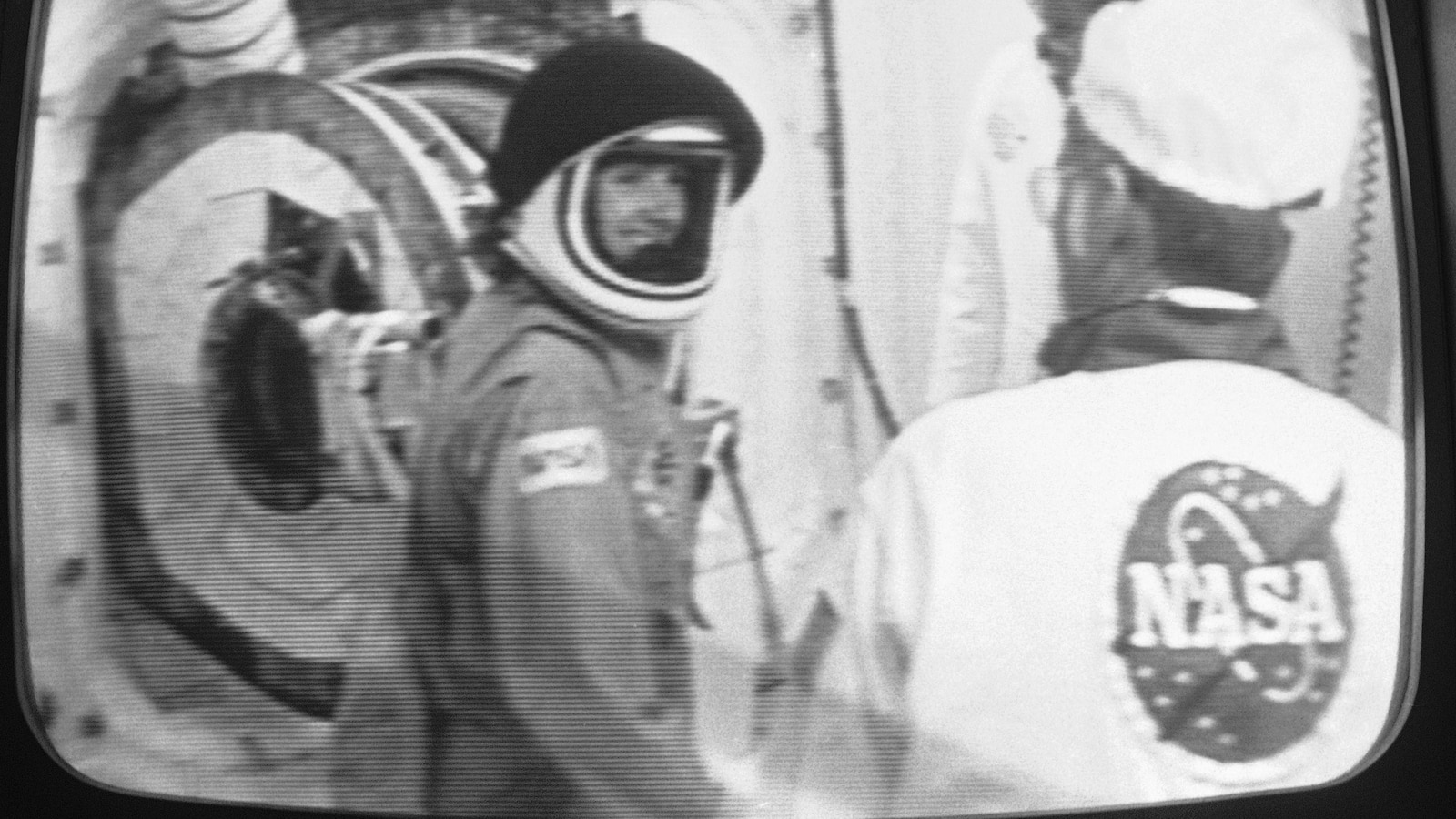CONCORD, N.H. — Decades after she was picked to be America’s first teacher in space, Christa McAuliffe is still a pioneer — this time as the first woman to be memorialized on the grounds of New Hampshire’s Statehouse, in the city where she taught high school.
McAuliffe was 37 when she was killed, one of the seven crew members aboard the Challenger when the space shuttle broke apart on live TV on Jan. 28, 1986. She didn’t have the chance to give the lessons she had planned to teach from space. But people are still learning from her.
“Beyond the tragedy, her legacy is a very positive one,” said Benjamin Victor, the sculptor from Boise, Idaho, whose work is being unveiled in Concord on Monday, on what would have been McAuliffe’s 76th birthday. “And so it’s something that can always be remembered and should be.”
The 8-foot-tall (2.4-meter) bronze likeness atop a granite pedestal is believed to be the first full statue of McAuliffe, known for her openness to experimental learning. Her motto was: “I touch the future, I teach.”
“To see a hero like Christa McAuliffe memorialized in this way will undoubtedly inspire the next generation of students each time they visit the New Hampshire Statehouse,” Gov. Chris Sununu said in a statement. His executive order enabled the McAuliffe statue to join statues of leaders such as Daniel Webster, John Stark and President Franklin Pierce.
McAuliffe was picked from among 11,000 candidates to be the first teacher and private citizen in space. Beyond a public memorial at the Statehouse plaza on Jan. 31, 1986, the Concord school district and the city, population 44,500, have observed the Challenger anniversary quietly through the years, partly to respect the privacy of her family. Christa and Steven McAuliffe’s son and daughter were very young at the time she died and was buried in a local cemetery. Steven McAuliffe wanted the children to grow up in the community normally.
But there are other memorials, dozens of schools and a library named for McAuliffe, as well as scholarships and a commemorative coin. A science museum in Concord is dedicated to her and to native son Alan Shepard, the first American in space. The auditorium is named for her at Concord High School, where she taught American history, law, economics and a self-designed course called “The American Woman.” Students rush past a painting of her in her astronaut uniform.
In 2017-2018, two educators-turned-astronauts at the International Space Station recorded some of the lessons that McAuliffe had planned to teach, on Newton’s laws of motion, liquids in microgravity, effervescence and chromatography. NASA then posted “Christa McAuliffe’s Lost Lessons” online, a resource for students everywhere.
Victor comes from a family of educators, including his mother, with whom he’s shared a number of discussions about McAuliffe as he’s worked on the statue — including his recollection of watching the Challenger disaster on television as a second-grader in Bakersfield, California.
“It was so sad, but I guess all these years later, the silver lining has been the way her legacy has continued on,” he said.
Victor has sculpted four of the statues in the U.S. Capitol’s National Statuary Hall, the most of any living artist. To represent McAuliffe, he looked at many images and videos, and he met with Barbara Morgan, who participated in the Teacher in Space program as backup to McAuliffe for the Challenger mission. Morgan also lives in Boise and let him borrow her uniform, the same as the one McAuliffe wore.
“Getting to talk to Barbara about Christa, just learning even more, it’s just something that’s irreplaceable,” Victor said. “Just to hear about her character. It’s just amazing.”

